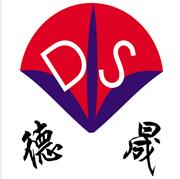- Enzyme(14)
- Carbomer(2)
- Blood collection tube additives(12)
- trinder's reagent(9)
- Biological buffer(21)
- Chemiluminescence reagent(9)
| Hubei xindesheng Material Technology Co., Ltd | |
|---|---|
| Country: | China |
| Tel: | +8618971041571 |
| E-mail: | zjing9632@gmail.com |
| QQ: | 2198447049 |
| Skype: | Chat Now! |
Five biological buffers you must know - for protein purification
Release time: 2022-03-09
General principles of protein purification
Protein purification should use the internal similarity and difference between different proteins, use the similarity between various proteins to remove the pollution of non protein substances, and use the difference of each protein to purify the target protein from other proteins. The size, shape, charge, hydrophobicity, solubility and biological activity of each protein will vary. Using these differences, the protein can be extracted from mixtures such as E. coli lysates to obtain recombinant proteins
Replacement of biological buffer
Although changing the buffer can not improve the protein purity, it plays an extremely important role in the protein purification scheme. Different protein purification methods need buffers with different pH and ionic strength. Each step of protein purification will cause the loss of target protein, especially the step of buffer balance. The protein will bind to any surface that it can touch, and the rapid change of shear force, foaming and ionic strength can easily deactivate the protein. The following 5 kinds of biological buffer for protein purification are introduced.
1) Tris buffer
◆ for anion exchange chromatography
For gel electrophoresis buffer (TAE or TBE).
◆ used to prepare Laemmli buffer, denaturation and loading of protein samples in SDS-PAGE
◆ it is not suitable to be used with the determination of dioctenic acid (BCA)
◆ Bradford dye binding method that may interfere with protein determination
2) Tris-HCl buffer
◆ used for hydrophobic interaction chromatography (HIC) as a component of separation and dialysis solution
◆ sample loading for ion exchange chromatography
◆ substrate solution for affinity chromatography
◆ used as elution buffer for SDS-PAGE
3) Bis-Tris buffer
It is used as electrophoresis buffer, gel buffer, sample buffer and so on.
(ACES) used as an electrophoretic buffer (BIS-TRIS/ACES) for gel electrophoresis.
Application of agarose gel electrophoresis
◆ used as a buffer for anion exchange chromatography, nuclear magnetic resonance spectroscopy and X-ray crystallography.
◆ it is considered to be an excellent substitute for dimethyl arsonic acid, a highly toxic buffer.
◆ interact with human liver fatty acid binding proteins (FABPs) and affect protein dynamics.
◆ it forms strong complex with Pb2 + and Cu2 + and has weak interaction with other common metals.
4) Mops buffer
MOPS is not only a pH buffer for protein purification and extraction, but also a component of animal, yeast and mammalian cell buffer medium, and also the best buffer for RNA separation by agarose gel electrophoresis. Due to the lack of the ability to form chelates with most metal ions, mops is recommended as a non coordination buffer 5) pipes when preparing solutions containing metal ions
5) TES buffer
◆ used as buffer for enzyme determination
For gel filtration chromatography and affinity chromatography.
As a professional biological buffer manufacturer, Desheng produces more than 30 kinds of high-quality buffers, providing a variety of packaging options and good after-sales service. If you have any requirements for products, please feel free to contact us!

